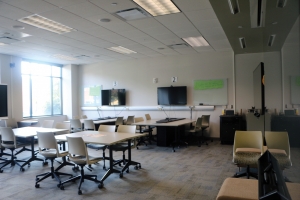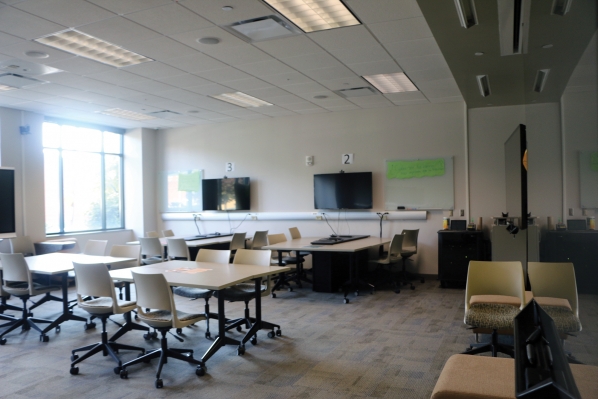Active Learning Classrooms (ALC) were first introduced to Appalachian State University ten years ago. In the time since, they have become a growing trend in higher education. What began as four original designs is now over 15 ALCs on campus, including one in the Reich College of Education - room 134.
Tom Van Gilder, Interim Associate Vice-Chancellor and Chief Information Officer, was a part of the original implementation of these classrooms. “In an ALC, students engage in collaboration, problem-solving, listening and discussion,” Van Gilder explained. “Unlike traditional classrooms, these rooms put students at the center, often seated together around tables featuring connections to shared displays.”
Van Gilder went on to say that the benefits of these spaces have been clearly demonstrated, both at App State and elsewhere. “Many students find that the affordances provided in these new environments contribute so much more to their learning. There is plenty of research that speaks to active learning being better for knowledge acquisition and retention.”
“When the RCOE building was being built, it was designed with an eye to active learning and collaboration, with movable furniture and seminar spaces to enhance consistent student engagement, along with classroom technologies such as display screens and SmartBoards.”
“When the RCOE building was being built, it was designed with an eye to active learning and collaboration, with movable furniture and seminar spaces to enhance consistent student engagement, along with classroom technologies such as display screens and SmartBoards,” said Dr. Amy Cheney, professor of instructional technology and director of digital teaching and learning.
“During the pandemic, each classroom space was enhanced with audio and video capacity to facilitate communication and learning at a distance,” she added. “The ALC provides a space for more seamless and collaborative use of digital technologies in the learning process.”
So what is next for ALCs? There has been sustained growth and a commitment to creating at least one additional ALC each year. The focus now is on feedback and assistance from members of the campus community to continue improving the labs.
“One of the things we are working on is to have an Active Learning Academy for faculty to learn how to enhance their teaching methodologies to take full advantage of the affordances of these spaces,” Van Gilder shared. “We need to garner more input from faculty and students regarding these spaces and what their needs are for improving these spaces and further their success in utilizing these spaces.”
For more information, contact the Center for Academic Excellence.
Contributed by Alex Peoples

